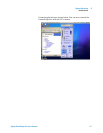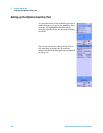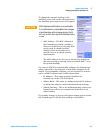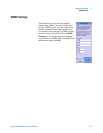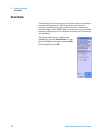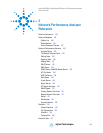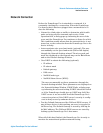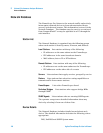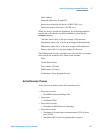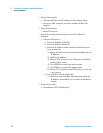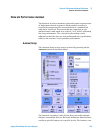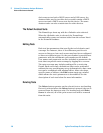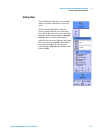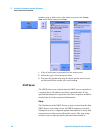Network Performance Analyzer Reference 5
Network Connection
Agilent FrameScope Pro User’s Manual 125
Network Connection
Before the FrameScope Pro is attached to a network, it is
constantly checking for a connection. When the FrameScope
Pro detects that it has been plugged into a network device it
does the following:
• Listens for a link pulse or traffic to determine which cable
pairs are being used for transmit and receive. If this
operation fails, a dialog pops up informing the user of the
error, and the FrameScope Pro continues to listen for a link.
This condition usually means that the network device is not
turned on, or the connection from the FrameScope Pro to the
device is faulty.
• Auto-negotiates wire speed and mode (optional). The user
can manually set the speed and mode (half or full duplex)
through the Network Settings wizard. The wire speed and
mode are displayed on the network map on the Main Menu
and on the Network Settings Window.
• Uses DHCP to obtain the following (optional):
• IP address
• IP subnet mask
• Default gateway
• DNS server
• NetBIOS node type
• NetBIOS Name Server (WINS)
The user can manually set these parameters through the
Network Settings wizard. These parameters are displayed on
the Network Settings Window. If DHCP fails, a dialog pops
up informing the user and asking if DHCP should be retried
or if the FrameScope should give up. DHCP may fail if the
DHCP server is not accessible from the FrameScope Pro’s
connection point or if the DHCP server’s security is config-
ured to deny access by unknown devices.
• Test the Default Gateway and the DNS and WINS servers. If
any of these devices is not working, an error is recorded in
the Error Log. The Default Gateway is tested by ARPing for
its MAC address. The DNS and WINS servers are tested by
looking up the FrameScope Pro’s host name.
When all of this has finished, the FrameScope Pro is ready to
monitor the network and perform network testing.



